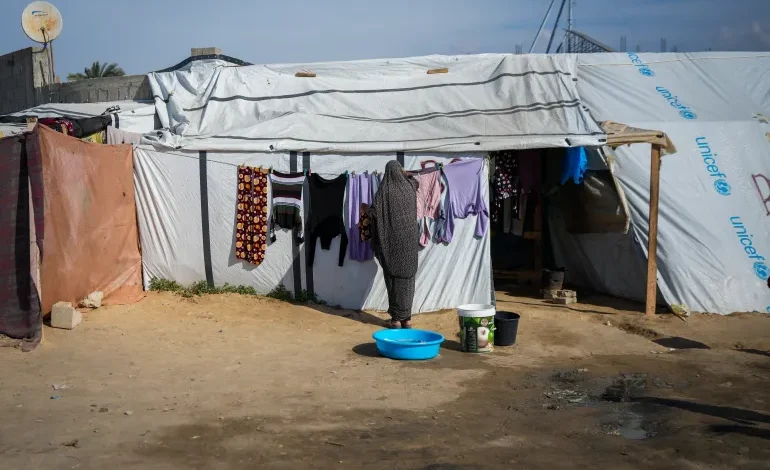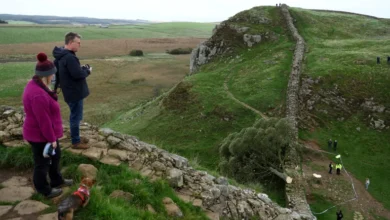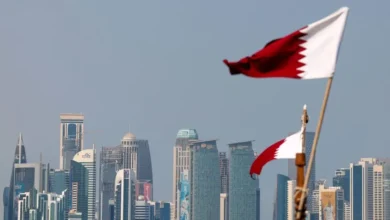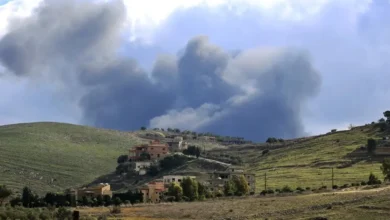‘My heart is split in two’: The women waiting to return to northern Gaza

Inshirah Darabeh has just one thought on her mind as she prepares to leave the home of her in-laws near Deir el-Balah and travel to her home in Gaza City: finding the body of her daughter, Maram, and giving her a dignified burial.
“I am not going back to find my home, all I want is to find her grave and put her name on a tombstone,” she says. Inshirah, 55, will walk more than 10km (6 miles) through rubble and bomb craters to reach her home. She thinks it will take at least three hours.
Inshirah is overwhelmed with mixed feelings of dread, pain and relief, she says, as she finally leaves the place she has sheltered in for the past year from Israel’s brutal war on Gaza, which has left more than 46,000 Palestinians dead and many thousands more unaccounted for and assumed dead under the rubble. Most of those killed have been women and children.
In accordance with the terms of the ceasefire agreement between Israel and Hamas which came into effect last Sunday, on day seven of the ceasefire – Saturday this week – internally displaced Palestinians were to be allowed to return without inspection by Israeli soldiers to their homes in the north, which has been under a deadly military siege since October 2024.
However, this was temporarily thrown into doubt on Saturday following the second prisoner exchange between Hamas and Israel. Israel said it would not allow the return of Palestinians to northern Gaza until an issue involving the release of one captive, Arbel Yehoud, is resolved.
In the meantime, those displaced to the south of Gaza are still waiting for news.
In November 2023, when Israeli ground troops entered the besieged Strip following the first month of aerial bombardment, Gaza was split in two. This military partition – known as the Netzarim Corridor – stretches across Gaza, from east to west, cutting off Gaza City and the towns of Jabalia, Beit Hanoon and Beit Lahiya in north Gaza from Khan Younis and Rafah in the south.
Cut off completely
Since the ground invasion, no one has been able to cross back to the north. According to UNRWA, the United Nations agency for Palestinian refugees, between 65,000 and 75,000 people are believed to have remained in North Gaza governorate – less than 20 percent of the pre-war population there – before the intensification of military operations and the siege.
People will be allowed to return on foot via al-Rashid Street, a waterfront street west of Gaza City which links the south of Gaza to the north. The passage of vehicles, however, has been a point of contention. According to a report by United States website Axios, Hamas had refused to agree to the placement of Israeli checkpoints along the Netzarim Corridor, a key road south of Gaza City.The compromise, says the report, was for US private security contractors to operate in Gaza as part of a multinational consortium established under the ceasefire deal with the backing of its American, Egyptian and Qatari brokers “to oversee, manage and secure” a vehicle checkpoint along the main Salah al-Din Street.
Following 15 months of near-incessant Israeli bombing which has left 90 percent of Gaza’s population internally displaced and more than 80 percent of buildings in ruins, survivors like Inshirah are not ready to give up.
She remembers the fateful Sunday in late October 2023, when she received a call at 4am, as if it were yesterday.
“My husband and I were forced to leave our home in the north in the first few weeks of the war,” Inshirah tells Al Jazeera. “We took my eldest granddaughter with us, but my three daughters and their husbands stayed behind.”
On October 27, communications were cut off completely for more than 36 hours.
“I didn’t know that Maram was martyred until the day after, when my eldest daughter called me as soon as communications were restored.”
Maram was 35. Her four-month-old daughter was killed first by the same Israeli air raid on Gaza City in late October that took Maram’s life soon after.










